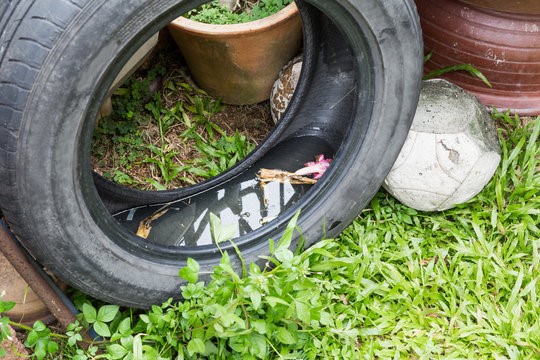How Can We Prevent Mosquitoes from Breeding? An Insight into Mosquito Breeding Prevention
Mosquitoes are not merely bothersome insects; they represent a substantial health hazard. Serving as vectors for diseases such as malaria, dengue, and the Zika virus, mosquitoes pose a significant threat to public health. The transmission of these potentially life-threatening illnesses underscores the urgent need for effective mosquito breeding prevention measures. Safeguarding our health and well-being requires a proactive approach to minimize the proliferation of these disease-carrying vectors. By understanding and addressing the factors that contribute to mosquito breeding, we can create environments that are less conducive to their reproduction, thereby reducing the risk of mosquito-borne diseases and fostering healthier communities. In this context, the importance of mosquito control measures cannot be overstated, emphasizing the critical role each individual plays in contributing to public health and the prevention of mosquito-borne illnesses.
Understanding Mosquito Breeding Habits
Before delving into effective mosquito breeding prevention strategies, it is essential to gain a comprehensive understanding of their reproductive habits. Mosquitoes exhibit a strong affinity for breeding in stagnant water bodies, ranging from expansive ponds and marshes to seemingly inconspicuous containers holding stagnant water. This diverse range of breeding sites highlights the adaptability and resilience of these disease-carrying insects.
The female mosquito plays a pivotal role in the breeding process by laying her eggs on the water’s surface. Remarkably, these eggs hatch into larvae within a remarkably short span of 24-48 hours. The larvae then sustain themselves by feeding on organic matter present in the water, undergoing a transformative growth into pupae within 7-10 days. Following this pupal stage, a mere few days elapse before the emergence of adult mosquitoes, ready to perpetuate the cycle by laying new eggs.
The swiftness of this mosquito breeding cycle poses a significant challenge in population control. Once established, mosquito populations can proliferate rapidly, necessitating a proactive and sustained approach to curb their breeding habitats. Consequently, a thorough understanding of these reproductive behaviors lays the foundation for the development and implementation of effective mosquito breeding prevention measures.
Effective Strategies for Mosquito Breeding Prevention
- Eliminate Standing Water
The most effective way to prevent mosquitoes from breeding is by actively eliminating any standing water in and around your home or community. This involves regularly emptying containers such as buckets, flower pots, bird baths, and pet dishes, especially after rain, as these items can collect water and become potential mosquito breeding sites.
For larger water bodies like ponds or ditches that are difficult to empty, alternative strategies can be employed. One option is the use of larvicides, special chemicals that hinder the development of mosquito larvae. Another eco-friendly approach is introducing natural predators like fish, which feed on mosquito larvae, thereby naturally controlling their population.
Vigilance is crucial in the ongoing effort to prevent mosquito breeding. Regular inspections for hidden water sources, such as clogged gutters or old tires, are essential, as these areas are often overlooked but can serve as unexpected breeding grounds for mosquitoes.
By consistently implementing these straightforward measures, individuals contribute significantly to reducing the overall mosquito population in their immediate environment. This not only diminishes the nuisance of mosquitoes but also helps mitigate the risk of mosquito-borne diseases, fostering a safer and healthier community.
- Use Mosquito Repellents
While preventing mosquitoes from laying eggs, using repellents serves as a crucial step in minimizing the presence of adult mosquitoes. Although it doesn’t directly halt the breeding process, it effectively reduces the population of adult mosquitoes that have the potential to lay eggs. This is particularly significant in curbing the overall mosquito population and mitigating the risk of mosquito-borne diseases.
Various types of mosquito repellents are accessible, catering to different preferences and needs. Traditional options include sprays and creams that can be applied to exposed skin, creating a protective barrier against mosquito bites. Additionally, innovative solutions such as electronic devices emitting ultrasonic sounds have gained popularity as alternatives for repelling mosquitoes.
These repellents act as a line of defense, making individuals less appealing to mosquitoes and decreasing the likelihood of bites. While not directly addressing mosquito breeding, the use of repellents contributes to an integrated approach in mosquito control, creating a more comprehensive strategy to safeguard against the potential health risks associated with mosquitoes.
- Install Mosquito Nets and Screens
An impactful approach to prevent mosquito breeding involves creating barriers to keep them from entering living spaces. A proactive measure is the installation of mosquito nets over beds and screens on windows and doors, constituting an effective line of defense against these disease-carrying insects. While this method doesn’t directly disrupt their breeding cycle, it significantly reduces the chances of mosquitoes entering homes, contributing to a comprehensive mosquito control strategy.
Mosquito nets serve as protective shields over sleeping areas, particularly during periods of heightened mosquito activity, such as dusk and dawn. These times are when mosquitoes are most active and pose an increased risk of transmitting diseases. By implementing nets over beds, individuals create a physical barrier that prevents mosquitoes from coming into contact with sleeping occupants.
Similarly, screens on windows and doors act as an additional layer of protection, creating a barrier that allows ventilation while keeping mosquitoes out. This approach not only enhances comfort within living spaces but also plays a vital role in minimizing human-mosquito contact, thereby reducing the risk of mosquito-borne illnesses.
- Regular Cleaning and Maintenance
Regular Cleaning and Maintenance
Adopting a systematic regimen of regular cleaning and maintenance in your immediate environment proves to be a highly effective and multifaceted strategy for preventing mosquito breeding. This proactive approach involves a comprehensive evaluation and upkeep of various elements in and around your living spaces.
To start, maintaining your garden becomes a crucial aspect of mosquito control. By regularly trimming tall grasses and shrubs, you create an environment less conducive for adult mosquitoes to rest and breed. This simple yet impactful measure disrupts their habitat, minimizing potential breeding sites and reducing the overall mosquito population.
Equally important is the regular cleaning of gutters and drains. Clogged or stagnant water in these areas can become ideal breeding grounds for mosquitoes. By ensuring these spaces are free of debris and water accumulation, you eliminate potential breeding sites and contribute significantly to mosquito control.
Community Involvement in Mosquito Breeding Prevention
Recognizing the collective impact of communal efforts, community involvement plays a pivotal role in the overall effectiveness of mosquito breeding prevention. Beyond individual initiatives, the power of communities coming together to address this shared concern is instrumental in creating a healthier and safer living environment for all residents.
One impactful way to foster community engagement in mosquito breeding prevention is through the organization of clean-up drives. These initiatives bring together community members to collectively address potential breeding grounds, ensuring that public spaces are kept free of debris and stagnant water. By coordinating regular clean-up activities, communities actively contribute to the reduction of mosquito breeding sites, thus minimizing the risk of mosquito-borne diseases.
Education also forms a cornerstone of community involvement. Informing residents about the dangers associated with mosquitoes, the potential health risks they pose, and the significance of preventive measures empowers individuals to make informed choices. This awareness can be disseminated through community workshops, seminars, and the distribution of educational materials.
Conclusion:
In conclusion, preventing mosquitoes from breeding requires a multi-faceted approach that includes both individual actions and community efforts. By understanding the breeding habits of mosquitoes and implementing effective strategies such as eliminating standing water, using repellents, installing nets and screens, and regular cleaning, we can significantly reduce the risk of mosquito-borne diseases in our communities.
Remember that while these steps can help reduce mosquito populations, they may not completely eliminate the risk of mosquito-borne diseases. Therefore it’s important to also take personal protective measures such as wearing long-sleeved clothing during peak mosquito activity times and using approved insect repellents.
With concerted effort in mosquito breeding prevention, we can all contribute to a healthier environment free from the threat of these disease-carrying pests.



